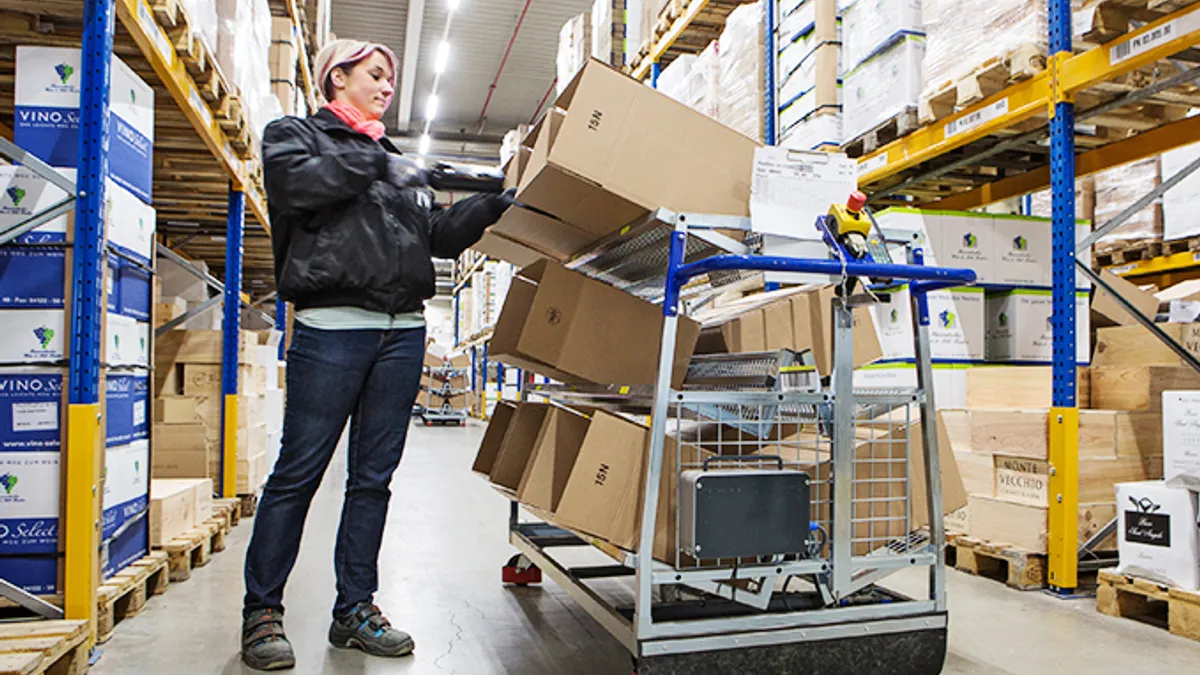Dive Brief:
- Clustering SKUs within a warehouse based on how often items are ordered together has been a commonly studied technique in the world of operations research. But a group of researchers from Binghamton University concluded in a paper published earlier this year that an important component was missing from this technique: picking delays caused by warehouse traffic.
- A model that generates storage assignments based on order correlation (closer to items it is often ordered with) and traffic balance preformed 49% better than randomly assorted inventory and 8% better than a model that just considered correlation, according to the research published in Computers & Industrial Engineering.
- Clusters with faster-moving inventory should be placed in "more accessible locations to minimize the travel time," the paper said.

Dive Insight:
The promise of fast shipping speeds has led supply chain managers to look for ways to shave time off orders at every step, from picking the order to the last-mile delivery. Speeding up the picking processes helps companies to meet the demand for fast shipping while allowing them to fulfill more orders in the same amount of time.
The researchers also cite work that says picking operations can make up 50% to 75% of the operating cost in a warehouse, so improving warehouse performance, including metrics like picking time, can reduce overall cost.
The problem with clustering items based only on correlation to other items is the traffic issues that could arise. If many of the items in the same cluster are high-demand items, it would create a lot of congestion in a distribution center, the researchers said.
"Picking delay inevitably occurs and compromises the warehouse productivity, especially when some order pickers work at the same time," the paper reads.
So, the researchers set out to optimize two variables: item correlation and traffic congestion. Congestion is the "amount of time during which a picker cannot move due to congestion," according to the paper.
The researchers built their model using data on customer orders. The historical data is used to create clusters of SKUs within the warehouse, but then the SKUs in each cluster go through an assignment stage, during which they are placed in locations meant to minimize disruptions to traffic flow.
Balancing traffic flow throughout the warehouse is done by minimizing the total SKU demand within a cluster as much as possible.
The researchers tested multiple modeling techniques on actual warehouse data that included 3,078 orders across 756 SKUs with almost 80% of the customer orders occurring within just 20% of the SKUs. There are 21 storage areas within the warehouses, with about 36 SKUs per cluster.
Researchers then ran multiple simulations for various modeling configurations, replicating each scenario 20 times. Simulations included a range of pickers (4,8,12 and 16), which can be seen in the results.
The models that simply clustered without considering the impact on traffic resulted in less travel time, but more picking delays. The researchers looked at five multi-objective evolutionary algorithms and the one that "evenly considers both travel time and picking delay, provides the least amount of time spent in traveling and picking delays, regardless of the number of order pickers," the paper reads.
This story was first published in our weekly newsletter, Supply Chain Dive: Operations. Sign up here.















